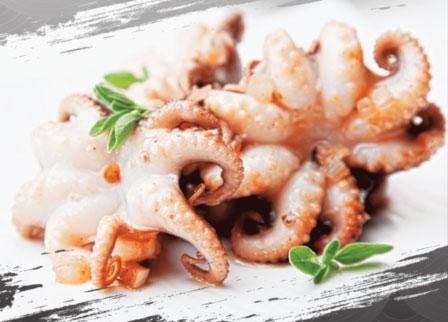An increasingly global marketplace has popularized many Asian foods in the Western marketplace. Sushi restaurants have flourished in many places, but not all Eastern seafood has caught on so quickly. Here’s a list of Asian seafood items that are not often available from Western seafood sellers.
The Sea Cucumber is a Seafood Meat, Not a Vegetable
The sea cucumber is a sausage shaped creature with warty skin and a soft fleshy body. It is considered a delicacy in China, where many people eat this sea animal for its supposed aphrodisiac qualities. According to Aliza Green’s Field Guide to Seafood, the sea cucumber is bland on its own but has the ability to absorb and accentuate flavors when cooked.
The sea cucumber is often sold cleaned and dried to be re-hydrated in soups or stir-fries. Although not much to look at, this creature can fetch a high price. According to the FAO’s Ambo Tuwo in “Status of sea cucumber fisheries and farming in Indonesia” this sea animal can fetch from US$1-US$80 per kilogram.
Eel is a Sea Animal Caught in America, Sold in Asia
Although eel won’t be found on an American Red Lobster menu, eel fisheries do good business exporting this seafood meat out of America. Wild eels caught off Eastern Canada and the Eastern US seaboard are considered a delicacy in many European and Asian countries, according to Iowa State University’s Agricultural Marketing Resource Center (AgMRC).
Be wary of wild caught eel though, as their populations are declining in many areas. Instead, eat eel from eel farms which can be found in many countries including the UK, France, Morocco, China and Japan. Japan is the largest market for this particular seafood meat, consuming 99,770 tons of eels per year according to the AgMRC.
A Seafood Gift From Sea Urchins
Male and female sea urchins are collected not for their seafood meat but rather their gonads or ‘roe’. Aliza Green says that roe should have a smooth, buttery texture and that each sea urchin has five pairs of roe lining the sea urchin shell from top to bottom. This seafood gift from sea urchins can be quite pricey – a spoonful in Japan can cost up to US$100.
A seafood seller will find Japan the largest market for this particular seafood. According to the 2009 edition of Oceanography and Marine Biology: An Annual Review (R.N. Gibson et al.) sea urchin fisheries are at work around the world including Chile, California, Alaska, Russia, Nova Scotia, and Japan. Japan eats over 80% of the world’s sea urchin catch. However, sustainable management of sea urchin fisheries is important to keep in mind – fisheries in France, Ireland, and South Korea have already collapsed.
Shark Fin Soup: Fresh Seafood or Endangered Animal?
Shark fin soup is considered a delicacy by the Chinese and a seafood seller can get up to US$500 per pound for a shark fin – according to CNN’s Lisa Ling in the article “Shark fin soup alters an ecosystem”. The glamour given to shark fin soup is proving catastrophic for shark populations and is driving many shark species to the Endangered list. Roughly 100 million sharks are killed every year says Ling – despite the fact that shark is a tasteless seafood meat. Shark meat is flavorless and only adds a gelatinous texture to soup. Many people vilify sharks – even though sharks are less dangerous than the media would have people believe.
Is Asian Seafood So Different?
Fresh seafood is appreciated around the world – although different sea animals may be preferred in different places. As the world becomes smaller and cultural diffusion takes place, Westerners may find themselves trying and liking Asian seafood more often.
However, regardless of which sea animals are eaten or how they are prepared, emphasis should be given to where they came from and how they are caught. There are only so many animals in the sea – conservation strategies ought to be employed so that future generations can continue to enjoy fresh seafood.


















